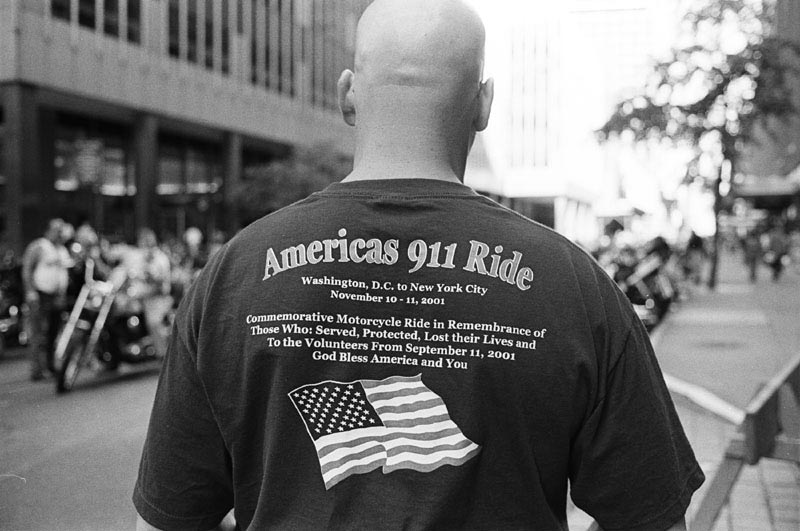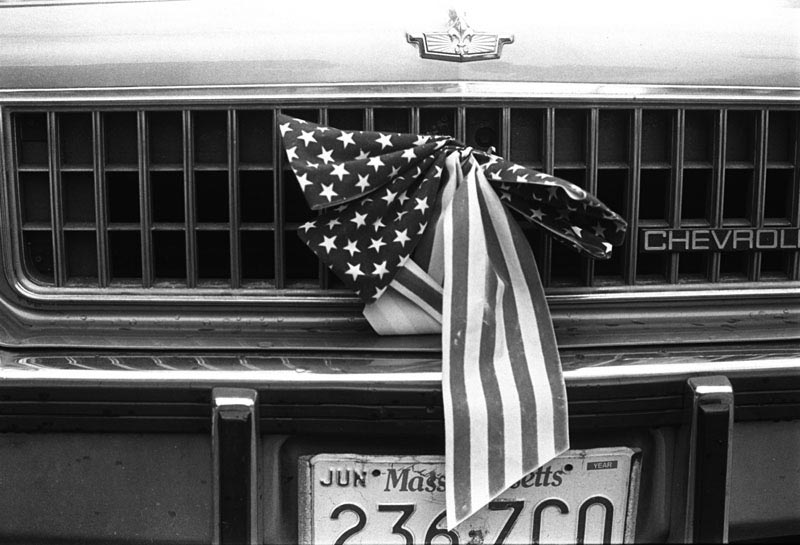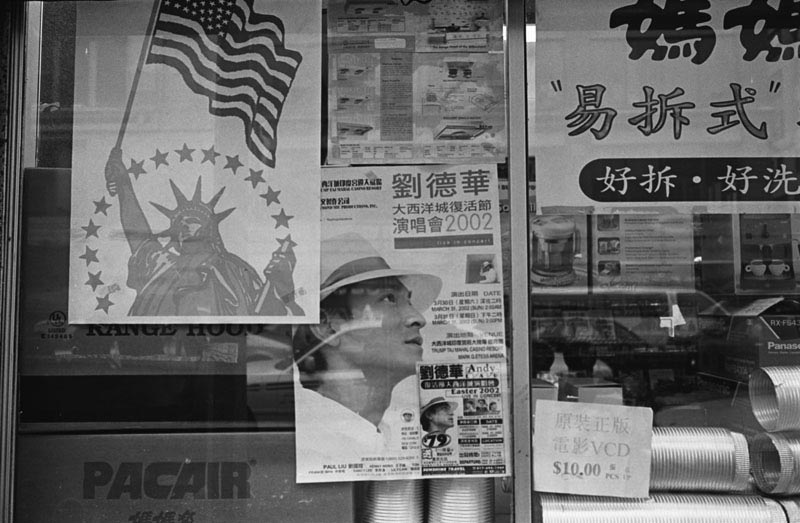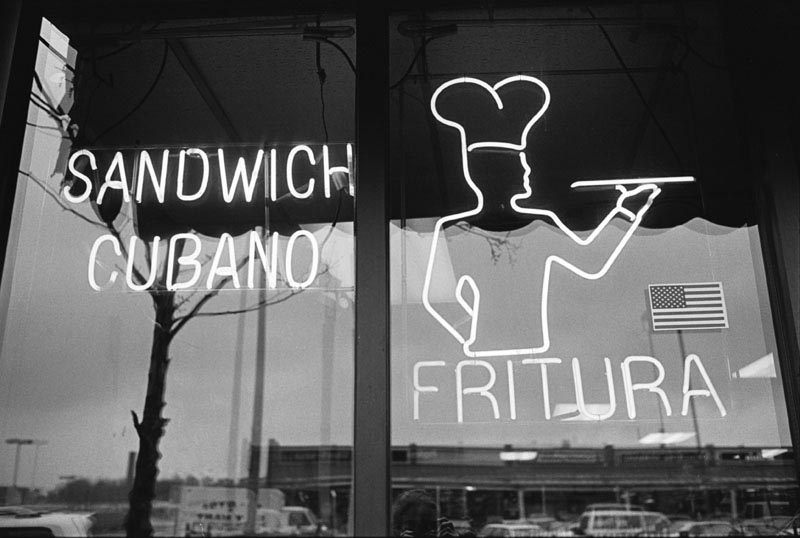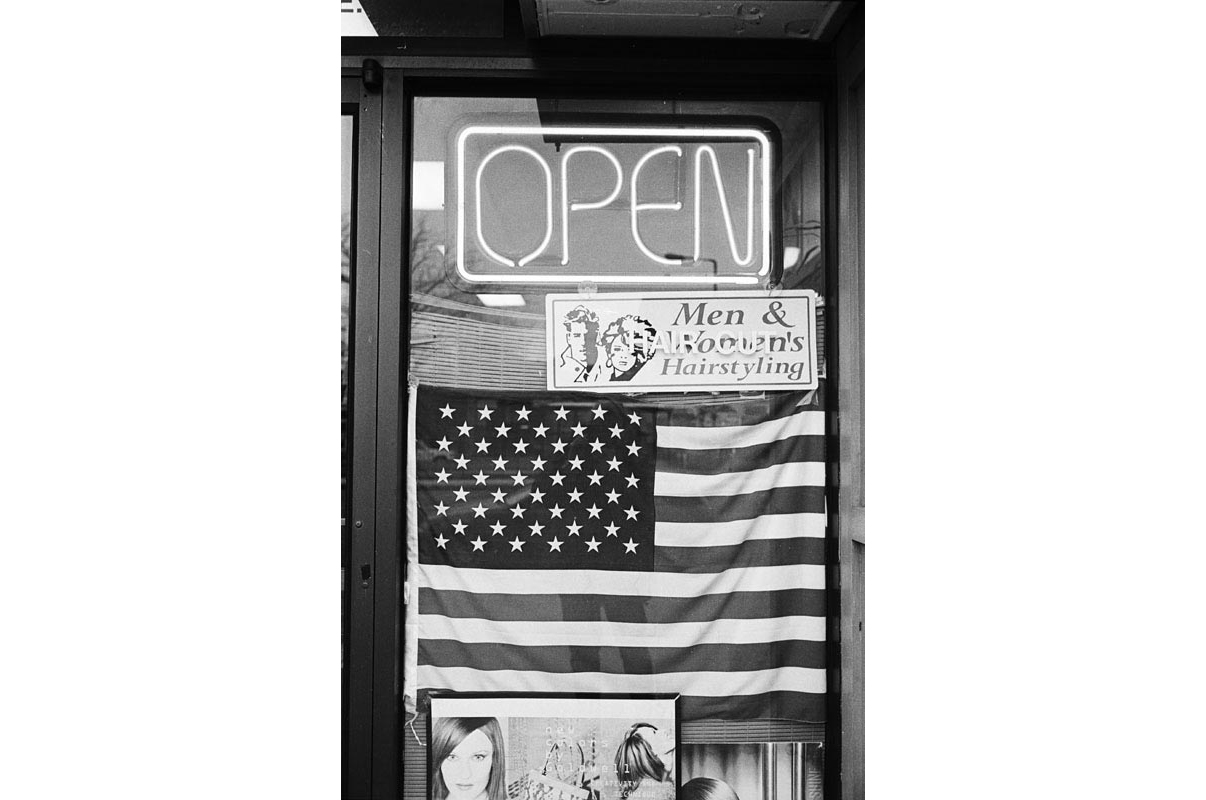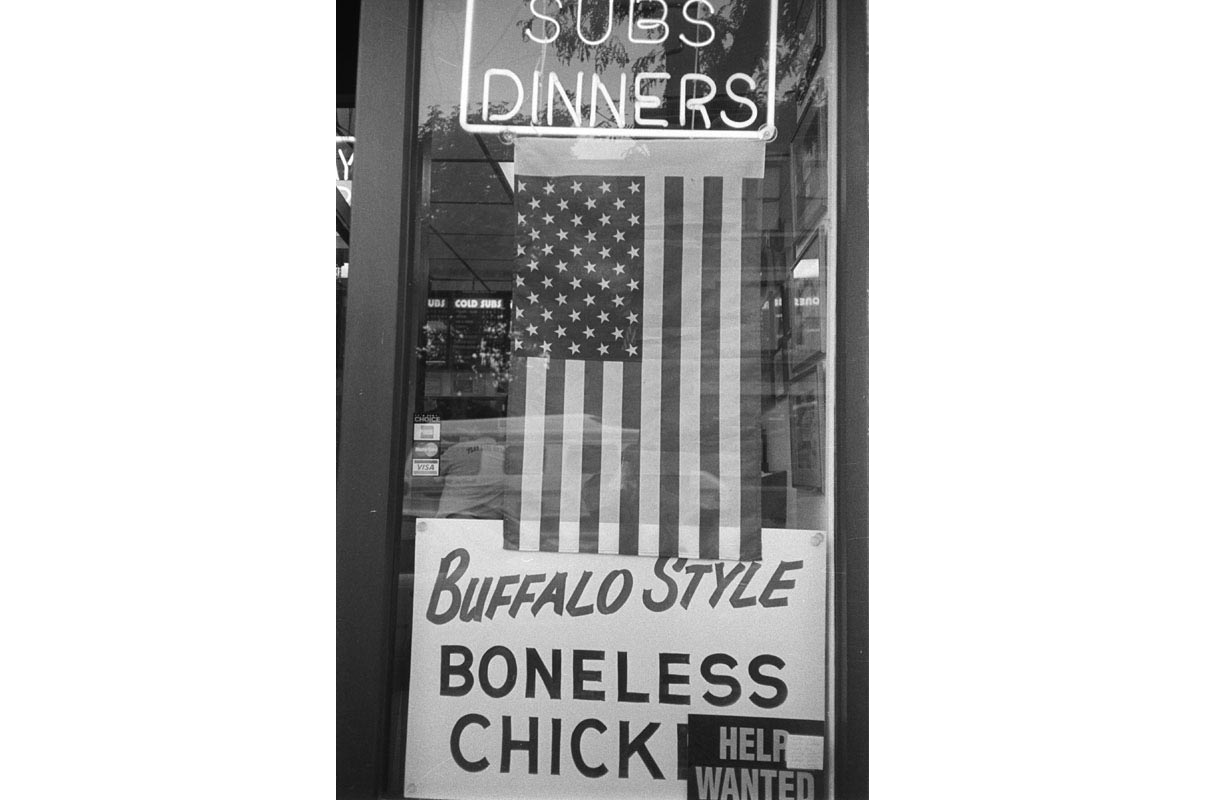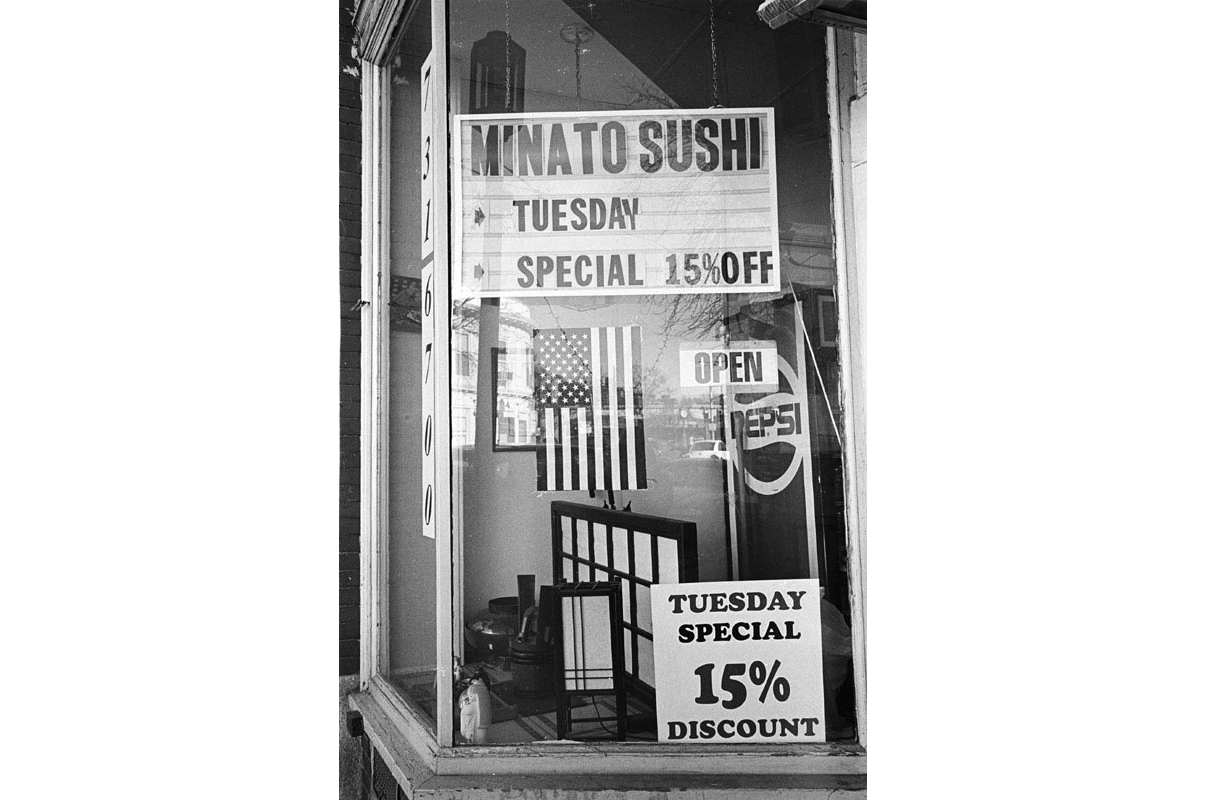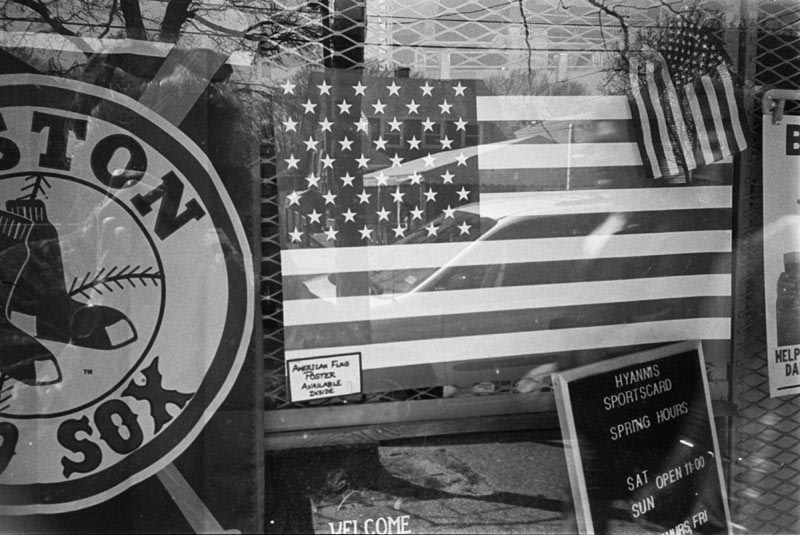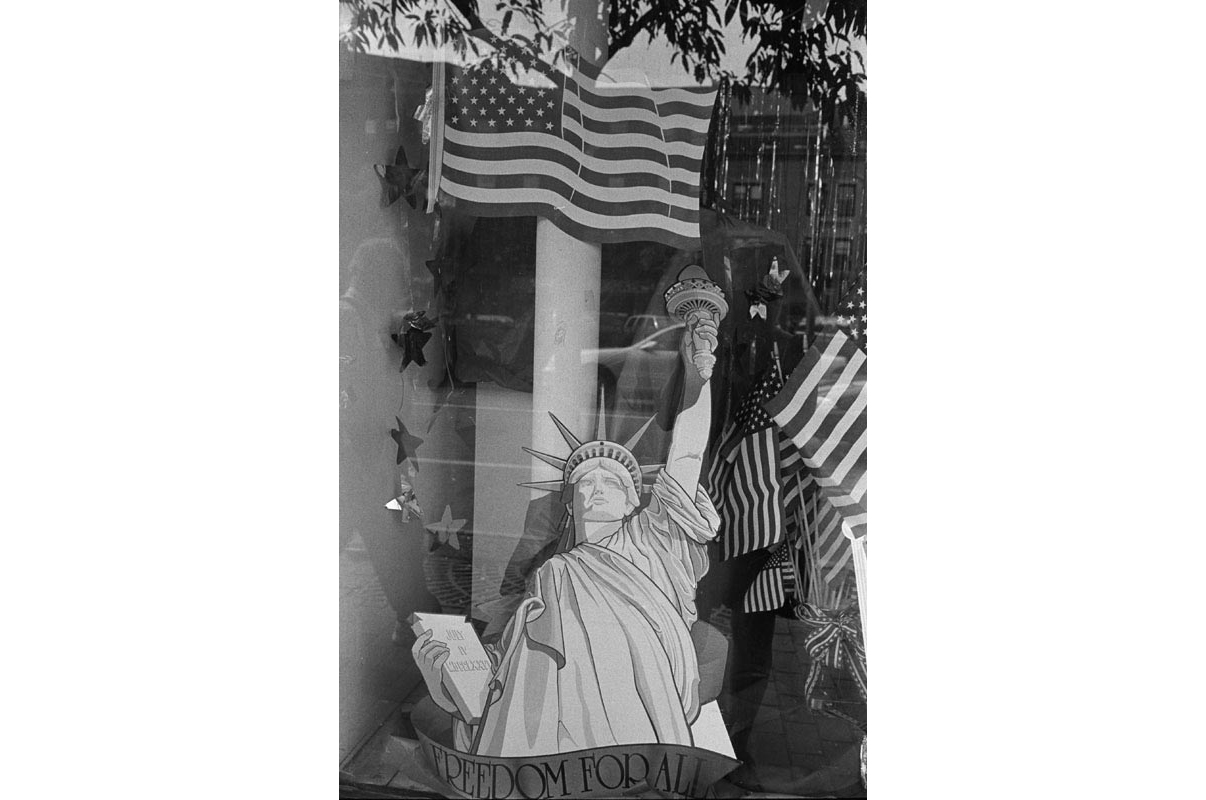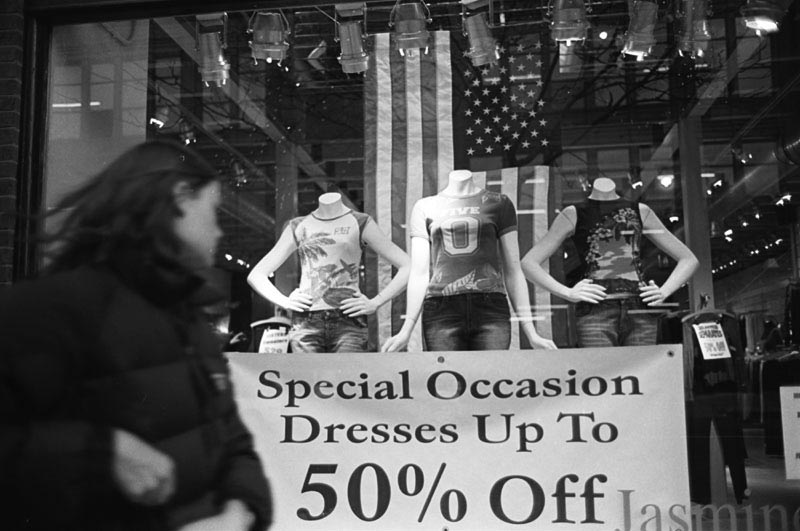Flagging Spirits
On the morning of September 11, 2001, a friend from the dog park phoned and said, “Turn on your TV.” I did and saw the second plane hit the World Trade Center. For days, I watched the same images over and over. While I didn’t know anyone personally who died in the attacks, there was no way of getting away from the grief and shock, not even in sleep when nightmares of planes crashing into buildings dogged me.
When Sally Stein, a scholar and photographer, wrote from L.A. that she’d photographed a guy, probably an illegal immigrant, selling American flags on the median strip when she was driving, I began to notice the endless flags that suddenly had appeared everything. They were on car and pickup truck bumpers, in apartment windows, on lawns, in the stores of Vietnamese and Hispanic shopkeepers, on lapels.
I wanted to tag along on her impulse, to document this remarkable display of flags. Yes, they were displays of patriotism, but their ubiquitous presence went deeper than that. Many seemed indicators of class, others to act as talismans for worried immigrants, hoping to display their fidelity to America and protect themselves, their families and their goods. I saw 9/11 as an attack on America, but I also thought of it in context of the more complex, deep rooted and long-term policy that the U. S. had had toward the Middle East and oil consumption. I knew that Sally would be photographing with that in mind. And I hoped that we could collaborate on a project.
It would have been easier if she and I had agreed to produce an exhibition. However, I suggested the Internet since it seemed to be the most contemporary and potentially practical tool of communication, one that would allow us to reach a larger audience. My idea was to upload images and link to other sites, to blog discussions and to articles that focused on American foreign policy. I never wanted to lose sight of the tragic loss of lives, but I always thought the issues were far more complex than often discussed in popular media and certainly than the photographs would show.
I knew virtually nothing about setting up a website. But Margaret Wagner Hart did. She taught digital art in the same department at the University of Massachusetts, Boston. She did the bulk of the work. And there was a lot of it, a lot of images, a lot of pages, a lot of back and forth. There is a thick archive of e-mails documenting the growth of this project from two people, then three including Margaret, and so on into a site that contained photographs of flag displays from different parts of the country and represented very different viewpoints.
Flaggingspirits didn’t have the political dimension that I’d envisioned. I hadn’t the time or skill to add links to informative and critical writing that would have placed the images in context. Undoubtedly my thoughts about our collective project, flaggingspirits, were colored by the war in Iraq. Many of us had marched against it, carrying flags as well as protest posters, but with little belief that Congress would hold out for more proof that weapons of mass destruction existed in Iraq. 9/11 primed this country for the ‘the war on terror.’ I understand why that was an initial impulse after experiencing the shocking loss of life and the destruction in New York, but only now is it more widely accepted that information that lead to approving of this invasion was systematically manipulated by those in the White House who came into power with an agenda already in place.
In 2002, “Show: the flag,” a grid of five digitally printed images from each of the eight members of flaggingspirits was shown at Armory Northwest Gallery, Pasedena, CA, and “6 months/a memorial,” (A web-based collective response to 9/11, a project started by Sally Stein and Melissa Shook, involving images from seven photographers around the country) was shown at the Photographic Resource Center, Boston, MA. We had assumed that the site would remain up permanently, but it hadn’t.
